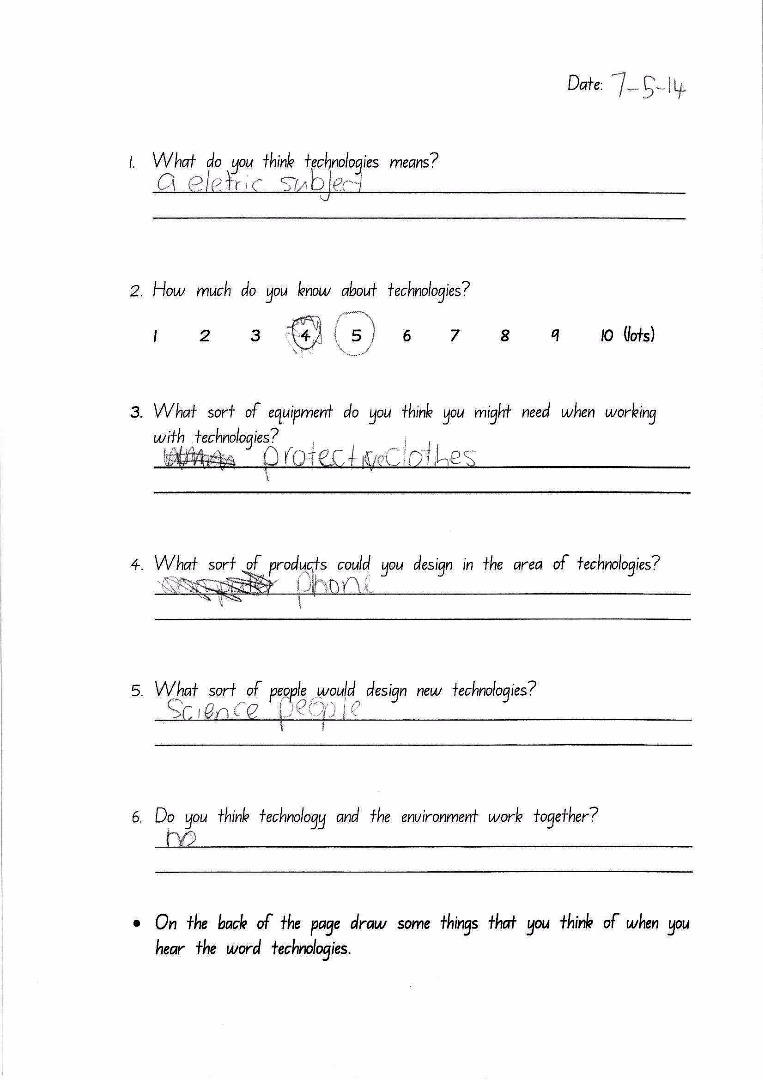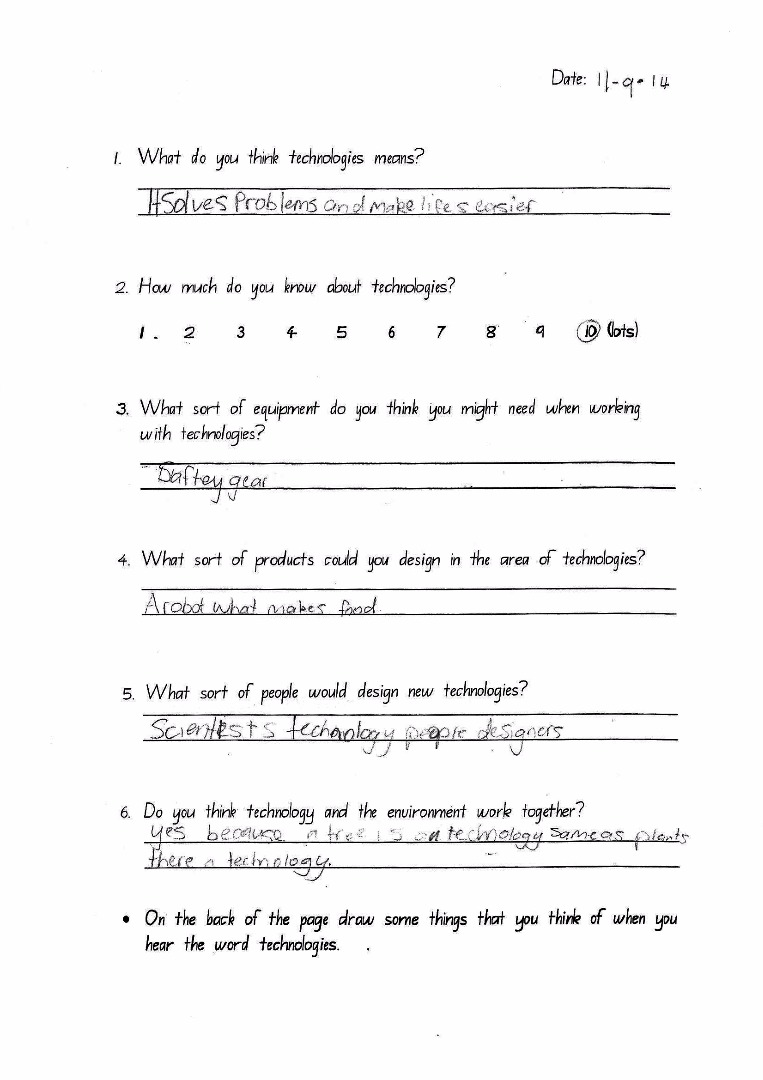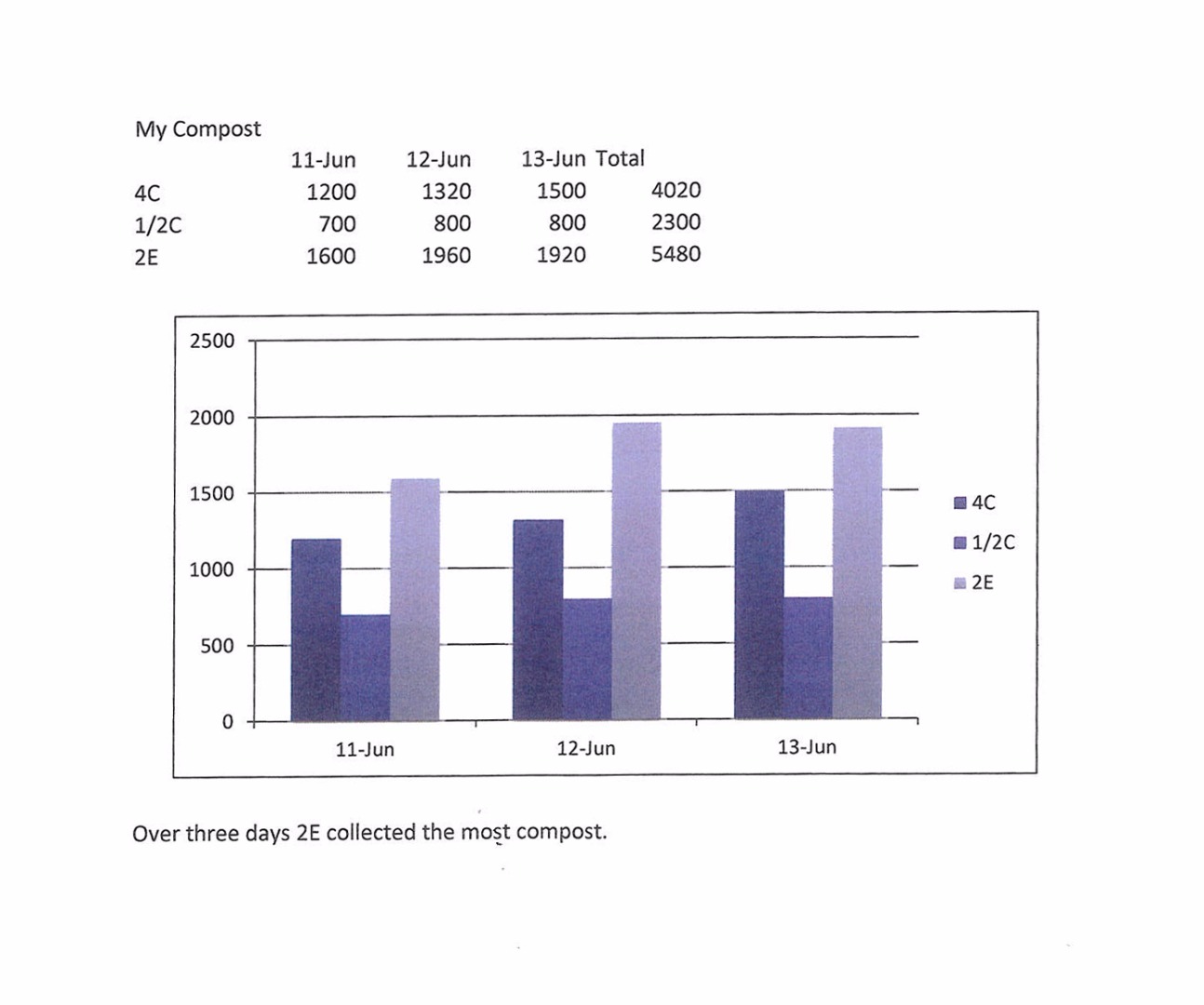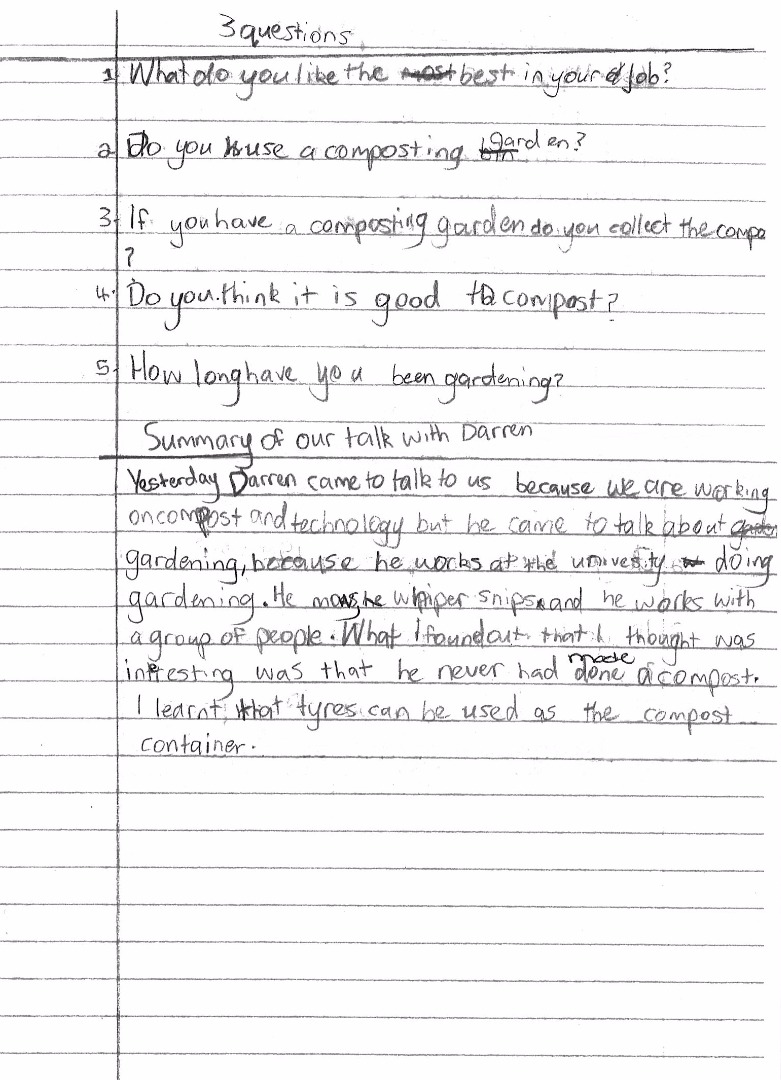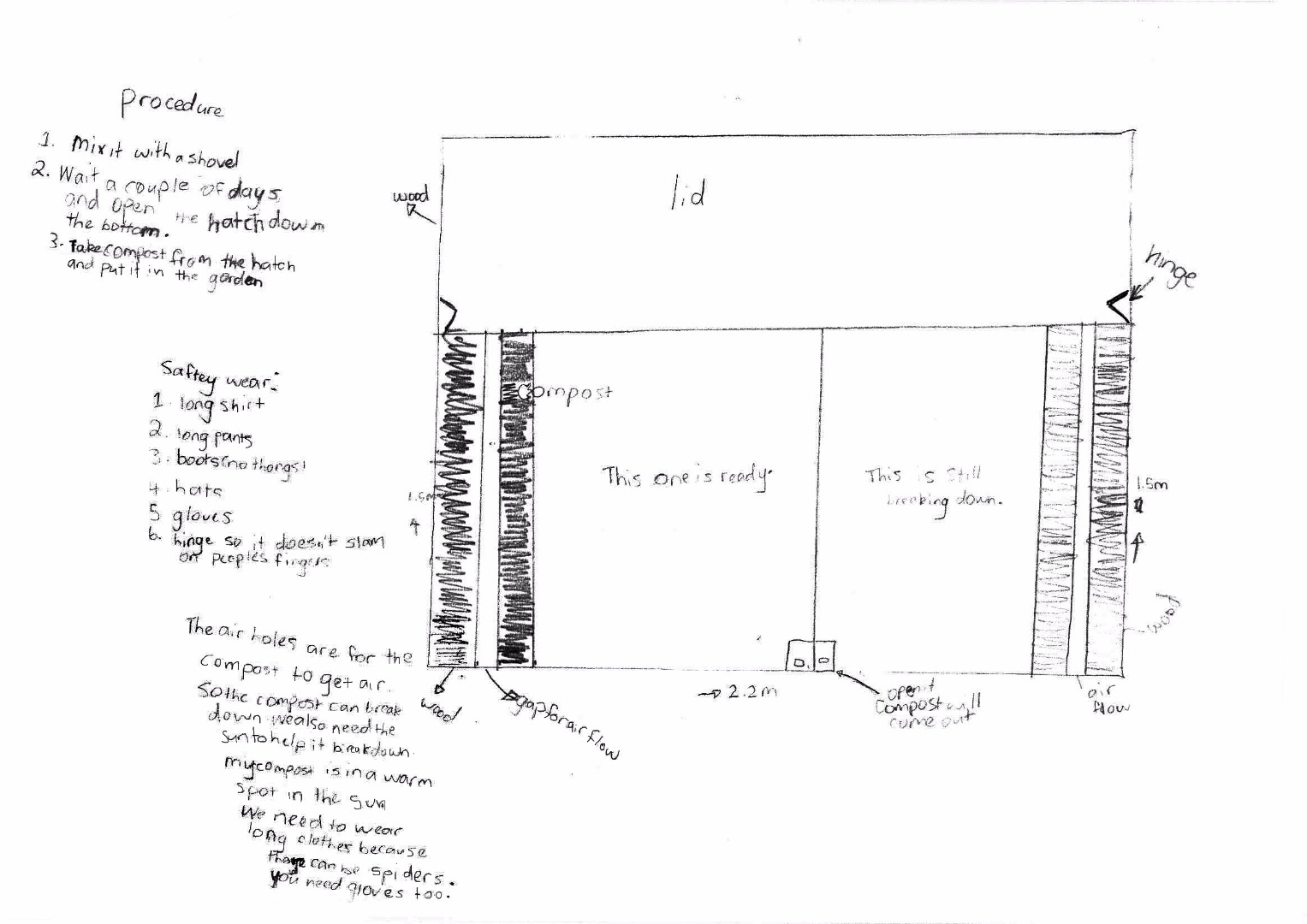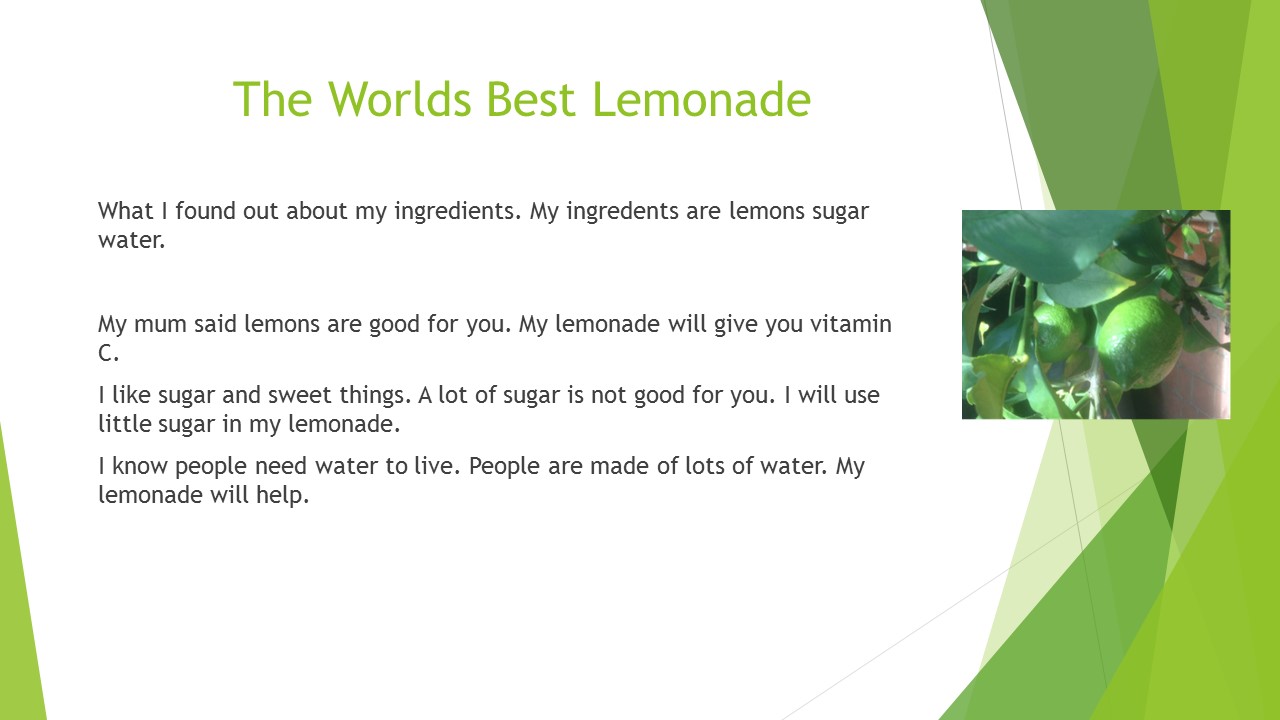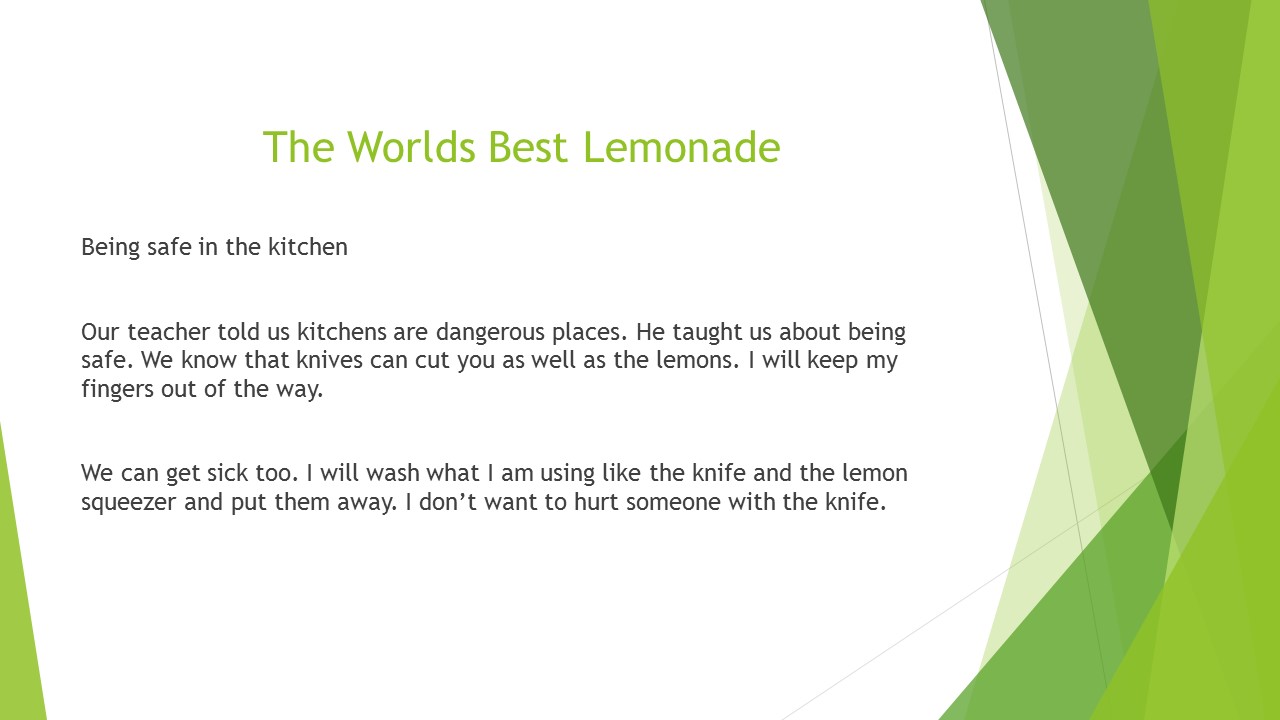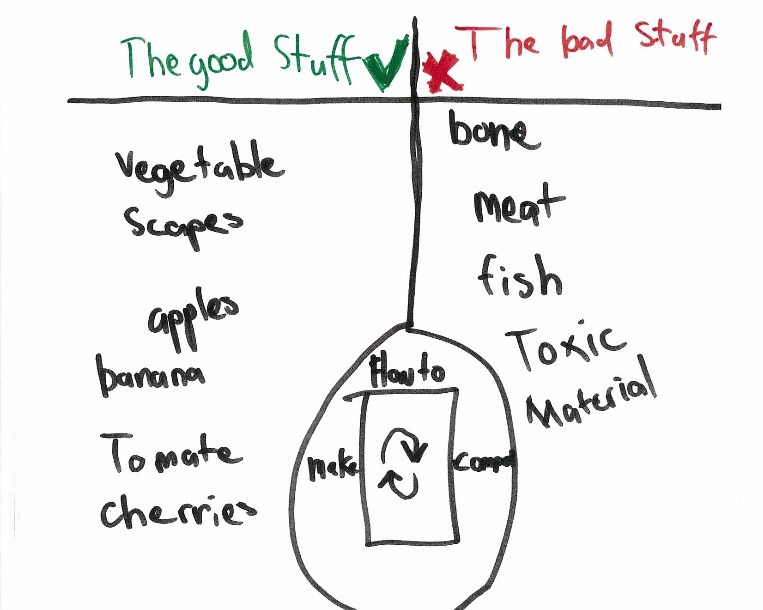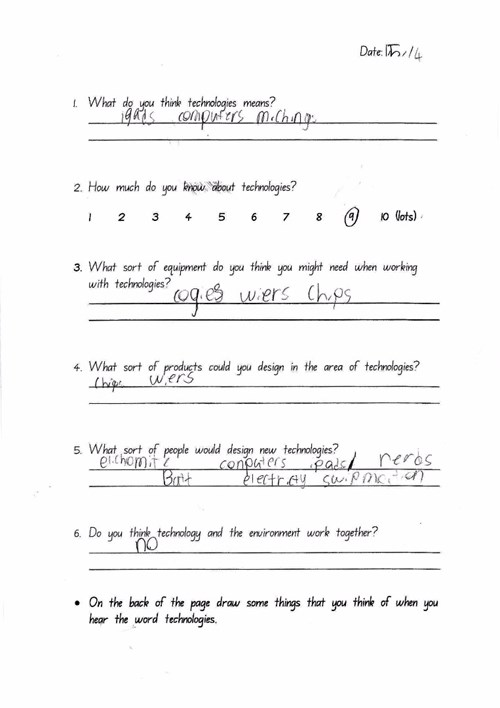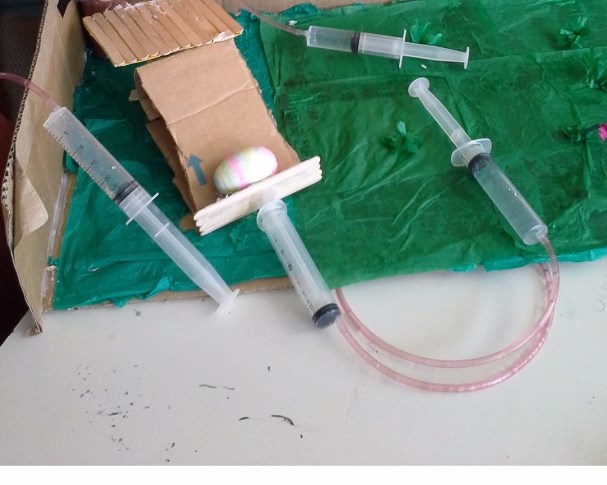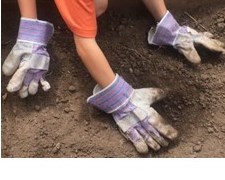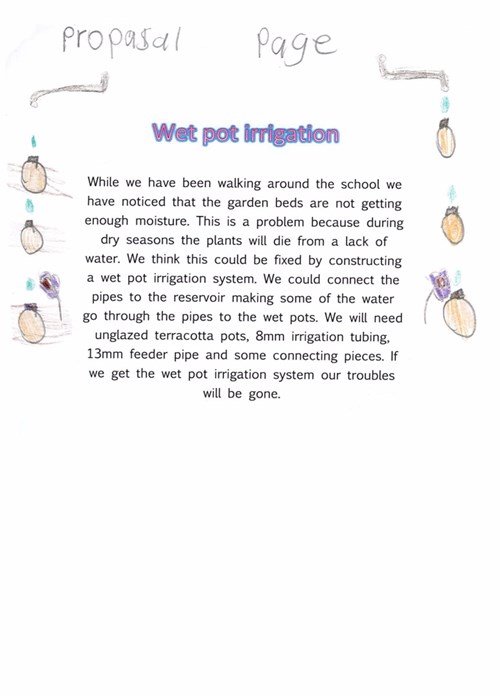Design project: Food
Summary of task
Students investigated how to collect suitable materials for composting at their school to improve recycling, reduce waste and improve the productivity of the school kitchen garden. Students designed and produced drawings of a composting system for food waste management for the school and implemented a system for collecting material for the compost from each of the classrooms after lunch. They weighed and recorded the collected material, then represented and interpreted the data as evidence of the success of the service. Students identified at least one ingredient from the school kitchen garden that could be used to make a drink. They demonstrated how to make the drink using appropriate equipment.
The focus of this task was to design and produce a service and a product for the technologies context food and fibre production/food specialisations.
Achievement standard
By the end of Year 4, students describe how social, technical and sustainability factors influence the design of solutions to meet present and future needs. They describe features of technologies that influence design decisions and how a range of digital systems can be used.
Students outline and define needs, opportunities or problems. They collect, manipulate and interpret data from a range of sources to support decisions. Students generate and record design ideas for an audience using technical terms and graphical and non-graphical representation techniques including algorithms. They plan a sequence of steps (algorithms) to create solutions, including visual programs. Students plan and safely produce designed solutions for each of the prescribed technologies contexts. They use identified criteria for success, including sustainability considerations, to judge the suitability of their ideas, solutions and processes. Students use agreed protocols when collaborating, and creating and communicating ideas, information and solutions face-to-face and online.
